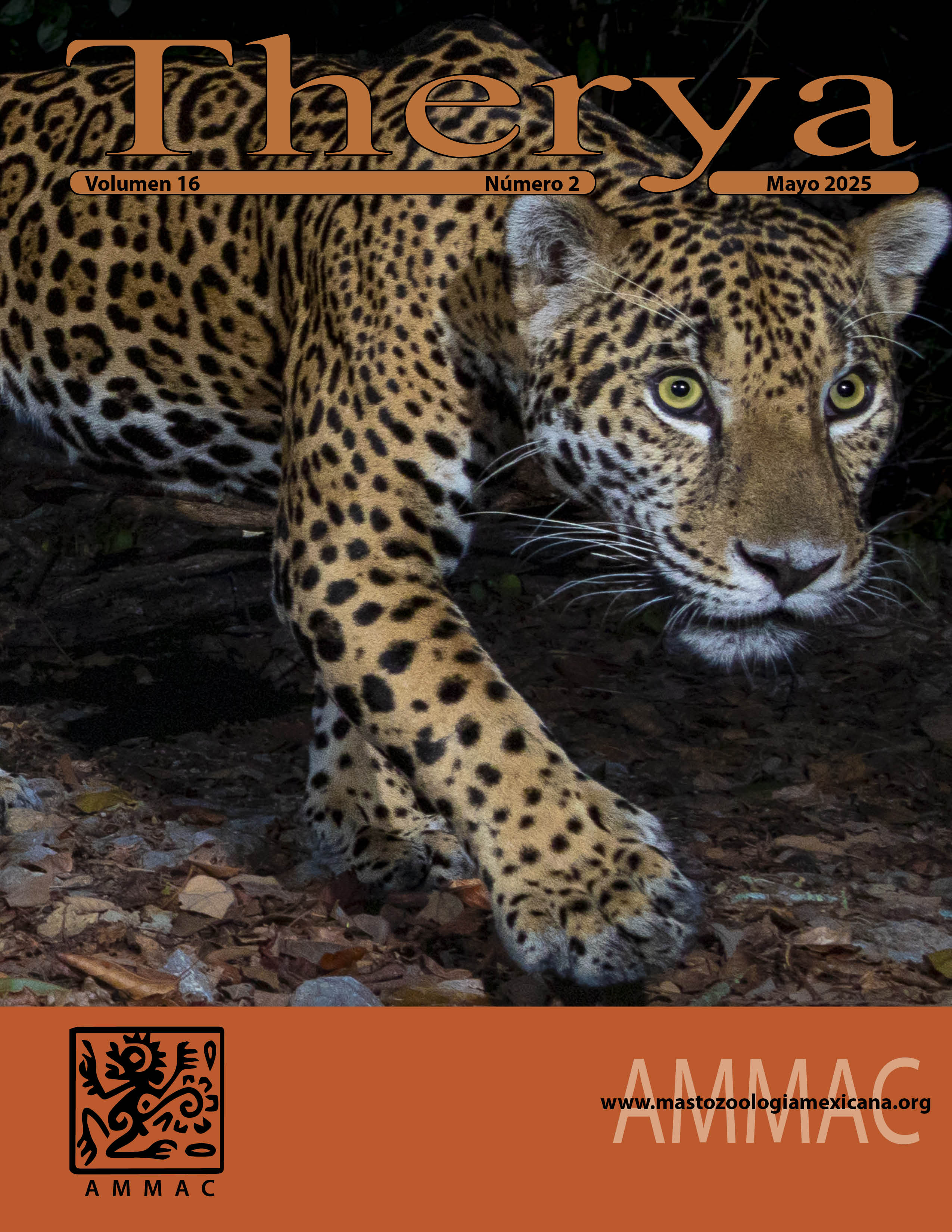Felid activity at artificial water troughs in a tropical forest in southeastern Mexico
Keywords:
climate change, extreme droughts, Panthera onca, Mayan rainforest, neotropical forests, Leopardus pardalis, Puma concolorAbstract
Felids play a major role in ecosystems as predators on many species of terrestrial vertebrates. Thus, a decline in their populations will have a direct impact on ecosystem functioning. Recently, extreme weather events, such as prolonged droughts, are an increasing threat in tropical forests. The implementation of mitigation measures, such as the provision of artificial water troughs, may serve to alleviate the water shortages during the dry seasons for wildlife. However, little information is still available on how species respond to this mitigation measure. Methods. Here, we examined five years of camera-trapping monitoring data at artificial water troughs in the Calakmul Biosphere Reserve, Campeche, Mexico. Specifically, we evaluated the spatial and temporal variation in the visitation rates of species of felids such as jaguar (Panthera onca), puma (Puma concolor), ocelot (Leopardus pardalis) and margay (L. wiedii), as well as their relationship with precipitation, temperature, and interspecific avoidance. Results. The ocelot and puma were the most frequent species observed at the artificial water troughs; margay was rarely observed. Although we found that artificial water troughs located in sites with higher annual temperatures and lower precipitation had a higher rate of visits by these species of felids, there was no significant difference. The artificial water troughs visited by these species of felids were nocturnal; there were no significant differences in interspecific temporal segregation between species of felids, suggesting that water resource is used irrespectively of other potential competitors or predators. Discussion and conclusion. Once prolonged droughts become extreme, management actions to provide artificial water supply to species of felids and wildlife in general will be valuable for their persistence of their populations in tropical ecosystems.
Downloads
Downloads
Additional Files
Published
How to Cite
Issue
Section
License
THERYA is based on its open access policy allowing free download of the complete contents of the magazine in digital format. It also authorizes the author to place the article in the format published by the magazine on your personal website, or in an open access repository, distribute copies of the article published in electronic or printed format that the author deems appropriate, and reuse part or whole article in own articles or future books, giving the corresponding credits.










